Do you have a question about the Huawei GT 2 Pro and is the answer not in the manual?
Learn about the watch's physical buttons and touch screen controls for navigation and interaction.
Step-by-step guide on how to connect your watch to your smartphone via Bluetooth for full functionality.
Instructions on how to turn the watch on, turn it off, and perform a restart if needed.
Details on how to connect the charging cradle and power adapter to charge the watch battery.
Guide on initiating, tracking, and concluding various workout sessions directly from the watch.
Learn how the Smart companion provides real-time voice guidance during running sessions.
Access and review detailed data for completed workouts on the watch and in the Huawei Health app.
Understand your fitness status, training load, and recovery time based on workout data.
How the watch automatically records steps, calories, activity intensity, and standing times.
Enabling the feature that automatically identifies and suggests workout modes.
Using the Route back feature to navigate and return to your starting point during outdoor workouts.
Performing an electrocardiogram (ECG) measurement using the watch for heart health analysis.
Joining research projects to monitor heart health, including arrhythmia and AF risk detection.
Conducting vascular health measurements for arteriosclerosis screening using ECG and PPG sensors.
Explanation of the three rings on the watch: steps, moderate-to-high intensity activity, and active hours.
Monitoring sleep patterns, stages, and quality using the watch and Huawei Health app.
How to measure blood oxygen saturation levels (SpO2) and set low SpO2 alerts.
Enabling and using the watch to continuously track heart rate throughout the day.
Measuring and viewing stress levels on a one-off or periodic basis using the watch.
Using guided breathing exercises to help relax and improve mood.
Setting up reminders to get up and move around throughout the day to prevent sedentary behavior.
Predicting menstrual cycles, periods, and fertile windows using data recorded in the Huawei Health app.
Installing, using, updating, and uninstalling applications on your watch via the Huawei Health app.
Receiving, viewing, and deleting notifications and messages synced from your phone.
Answering, rejecting, and checking call logs directly from your watch.
Playing and controlling music stored on the watch or on your connected smartphone.
Utilizing the built-in stopwatch and timer functions for timekeeping tasks.
Creating and managing smart or event alarms directly on the watch or via the Huawei Health app.
Activating and deactivating the watch's built-in flashlight feature for illumination.
Checking current altitude and atmospheric pressure using the watch's barometer function.
Using the watch's compass for directional guidance and calibration.
Viewing local weather information directly on your watch.
Locating your misplaced phone by making it ring from your watch.
Using the watch as a remote control to take photos with your phone's camera.
Pairing and connecting Bluetooth earbuds to your watch for audio playback.
Configuring Do Not Disturb mode to silence notifications and calls while keeping alarms active.
Interacting with the watch using voice commands for various functions and apps.
Ensuring proper fit and placement of the watch for accurate sensor readings and comfort.
Instructions for adjusting strap length and replacing watch straps for a secure and comfortable fit.
Personalizing watch faces by uploading and displaying your own photos.
Applying animated watch faces and configuring standby watch faces for display.
Using OneHop to transfer images between your phone and watch via NFC.
Installing new watch faces and deleting existing ones from the watch.
Configuring a list of favorite contacts for quick calling from the watch.
Adjusting the watch's time zone, language, and time format to match your phone.
Customizing ringtone volume and understanding notification alerts.
Assigning a specific app to be launched when the Down button is pressed.
Selecting and displaying frequently used apps in a favorites list for quick access.
Setting the screen brightness automatically or manually for optimal visibility.
Performing firmware updates for the watch to ensure it has the latest features and fixes.
Viewing essential device details like Bluetooth name, MAC address, model, and software version.
Resetting the watch to its original factory default settings to resolve issues.
Learn about the watch's physical buttons and touch screen controls for navigation and interaction.
Step-by-step guide on how to connect your watch to your smartphone via Bluetooth for full functionality.
Instructions on how to turn the watch on, turn it off, and perform a restart if needed.
Details on how to connect the charging cradle and power adapter to charge the watch battery.
Guide on initiating, tracking, and concluding various workout sessions directly from the watch.
Learn how the Smart companion provides real-time voice guidance during running sessions.
Access and review detailed data for completed workouts on the watch and in the Huawei Health app.
Understand your fitness status, training load, and recovery time based on workout data.
How the watch automatically records steps, calories, activity intensity, and standing times.
Enabling the feature that automatically identifies and suggests workout modes.
Using the Route back feature to navigate and return to your starting point during outdoor workouts.
Performing an electrocardiogram (ECG) measurement using the watch for heart health analysis.
Joining research projects to monitor heart health, including arrhythmia and AF risk detection.
Conducting vascular health measurements for arteriosclerosis screening using ECG and PPG sensors.
Explanation of the three rings on the watch: steps, moderate-to-high intensity activity, and active hours.
Monitoring sleep patterns, stages, and quality using the watch and Huawei Health app.
How to measure blood oxygen saturation levels (SpO2) and set low SpO2 alerts.
Enabling and using the watch to continuously track heart rate throughout the day.
Measuring and viewing stress levels on a one-off or periodic basis using the watch.
Using guided breathing exercises to help relax and improve mood.
Setting up reminders to get up and move around throughout the day to prevent sedentary behavior.
Predicting menstrual cycles, periods, and fertile windows using data recorded in the Huawei Health app.
Installing, using, updating, and uninstalling applications on your watch via the Huawei Health app.
Receiving, viewing, and deleting notifications and messages synced from your phone.
Answering, rejecting, and checking call logs directly from your watch.
Playing and controlling music stored on the watch or on your connected smartphone.
Utilizing the built-in stopwatch and timer functions for timekeeping tasks.
Creating and managing smart or event alarms directly on the watch or via the Huawei Health app.
Activating and deactivating the watch's built-in flashlight feature for illumination.
Checking current altitude and atmospheric pressure using the watch's barometer function.
Using the watch's compass for directional guidance and calibration.
Viewing local weather information directly on your watch.
Locating your misplaced phone by making it ring from your watch.
Using the watch as a remote control to take photos with your phone's camera.
Pairing and connecting Bluetooth earbuds to your watch for audio playback.
Configuring Do Not Disturb mode to silence notifications and calls while keeping alarms active.
Interacting with the watch using voice commands for various functions and apps.
Ensuring proper fit and placement of the watch for accurate sensor readings and comfort.
Instructions for adjusting strap length and replacing watch straps for a secure and comfortable fit.
Personalizing watch faces by uploading and displaying your own photos.
Applying animated watch faces and configuring standby watch faces for display.
Using OneHop to transfer images between your phone and watch via NFC.
Installing new watch faces and deleting existing ones from the watch.
Configuring a list of favorite contacts for quick calling from the watch.
Adjusting the watch's time zone, language, and time format to match your phone.
Customizing ringtone volume and understanding notification alerts.
Assigning a specific app to be launched when the Down button is pressed.
Selecting and displaying frequently used apps in a favorites list for quick access.
Setting the screen brightness automatically or manually for optimal visibility.
Performing firmware updates for the watch to ensure it has the latest features and fixes.
Viewing essential device details like Bluetooth name, MAC address, model, and software version.
Resetting the watch to its original factory default settings to resolve issues.
| Display Type | AMOLED |
|---|---|
| Display Size | 1.39 inches |
| Resolution | 454 x 454 pixels |
| Battery Life | Up to 14 days |
| Charging | Wireless charging |
| Water Resistance | 5 ATM |
| GPS | Yes |
| Internal Memory | 4GB |
| NFC | Yes |
| Weight | 52 g (without strap) |
| Dimensions | 46.7 x 46.7 x 11.4 mm |
| Compatibility | Android 5.0 or later, iOS 9.0 or later |
| RAM | 32MB |
| Build | Titanium case, ceramic back, sapphire glass |
| Sensors | Accelerometer, Gyroscope, Heart rate, Barometer, Ambient light |
| Bluetooth | Bluetooth 5.1 |
| Operating System | Lite OS |
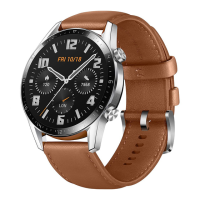
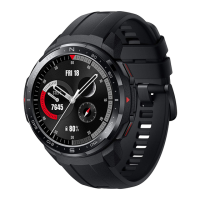
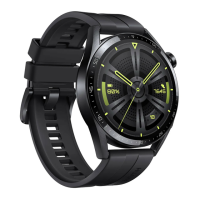
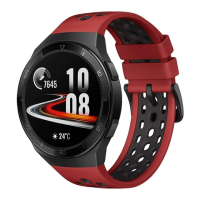

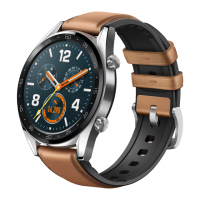
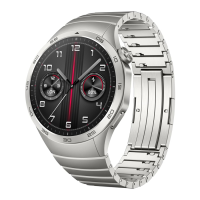

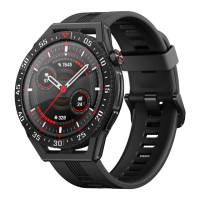
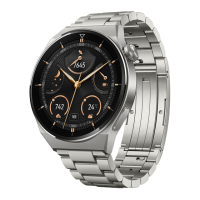
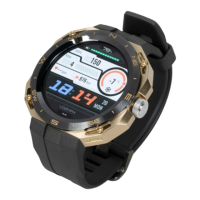

